If you’re of a certain age, you probably have a lot of memories of waking up and racing to the TV set to watch Saturday morning cartoons. For some people, they think about Mighty Mouse and Atom Ant. Meanwhile, as a member of Generation X, I dined on episodes of Speed Buggy, Scooby-Doo, Looney Tunes, The All-New Popeye Hour and Super Friends, among other shows. I don't know about you, but there was no cartoon I wouldn't watch.
I often wax nostalgic for Saturday mornings to my two teenage daughters, 17 and 19. I think it’s the one part of my childhood that they’re actually a little envious about. Otherwise, they seem to think that back in the 1970s and 1980s, the world was a little like The Flintstones and that everybody was living in caves and working with stone tools.
I was born in 1970, and so for me, the golden era of Saturday morning cartoons lasted from about 1973 to 1983, but obviously, depending on your age, you may feel differently. It's a little difficult to pinpoint the exact moment Saturday morning cartoons died, but they were basically killed off by networks adding their popular morning TV news shows to the weekends -- when NBC's The Today Show moved to Saturdays on August 1, 1992, that was pretty much the death knell -- and broadcast networks would defend themselves by pointing out that with children's cable channels, like Disney and Nickelodeon, on the rise, there was a place for kids to go.
The birth of Saturday morning cartoons is a little hard to pinpoint as well. It wasn't as if one day, all of the networks began airing animation on Saturdays all at once. But 1955 is as good of a year as any to offer up as the start of Saturday morning cartoons. Because it all began with a very famous animated mouse.
Not Mickey, though. Mighty Mouse.
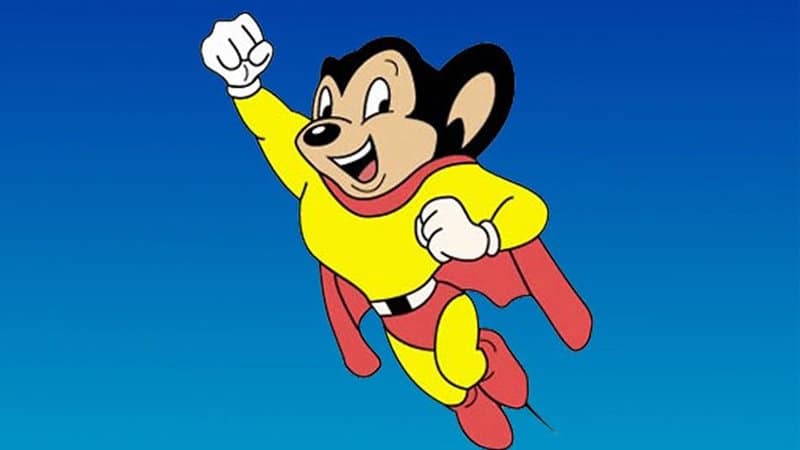
If it weren’t for him saving the day, there may have never been Saturday morning cartoons.
So let’s get to it: The Saturday morning cartoons’ origin story.
Today's "TV Lesson" Breakdown:
The First Saturday morning cartoons
Actually, if we’re going to get technical – and let’s do that – the very first Saturday morning cartoons were not on television but in the movie theater.
If you back and look through newspaper archives, as is practically my hobby, you’ll find lots of advertisements run by movie theaters, advertising Saturday morning cartoons.
As one ad went in the "Valley Morning Star," the paper of record for Tarlingen, Texas, an ad that ran November 5, 1941:
HEY, KIDS!
BIG FUN SHOW
EVERY SATURDAY MORNING
CARTOONS - COMEDIES -- FREE CANDY
AND RADIO BROADCAST.
text from a 1941 ad in the "Valley Morning Star," the newspaper for Tarlingen, Texas
Children bringing in the most milk bottle caps from Magee's Dairy would be picked to be on a quiz show. Not coincidentally, what was being billed as a “kiddie party” was being sponsored by Magee’s Dairy.
But while Saturday morning cartoons existed in the 1930s – cartoons were showing up in theaters on Saturday mornings – Felix the Cat cartoons began showing up in the theaters in 1919, Popeye cartoons were popular in the 1930s, and Looney Tunes, to name a few – it was the 1940s when it became something of a morning ritual for children to go to the movie theaters.
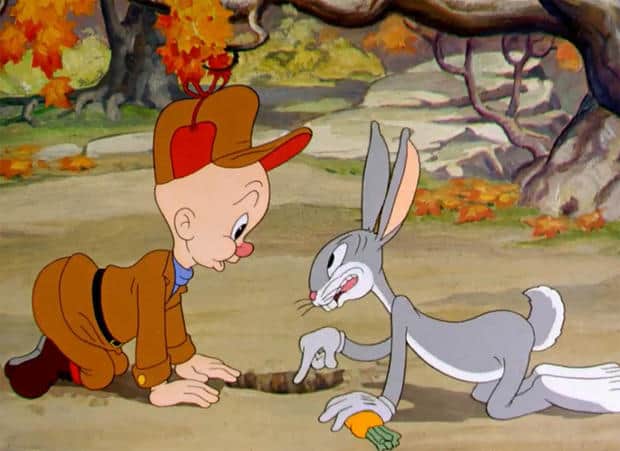
For good reason did this morning ritual begin. Children were out of school on weekends, and a lot of dads were off fighting in World War II, while plenty of moms were working and holding down the home front. So parents could sleep in while movie theaters catered to kids.
For instance, in 1947, at the Patio Theater, in Freeport, Illinois, the doors opened at 9:30 a.m., and kids could come see two-hours of Saturday morning cartoons.
In the late 1940s, television, as a medium, was just getting started, and in 1950, Crusader Rabbit became the first cartoon series produced for TV – but the program was syndicated and could be shown at whatever time a station wanted. Crusader Rabbit may have been on some stations on Saturday mornings, but the four-minute cartoons are just barely part of Saturday morning cartoon history.
Still, it's worth mentioning, if only because one of the show’s producers was Jay Ward, who would in 1959 create The Rocky and Bullwinkle Show, which became a Saturday morning cartoon staple, after first airing during other times throughout the week.
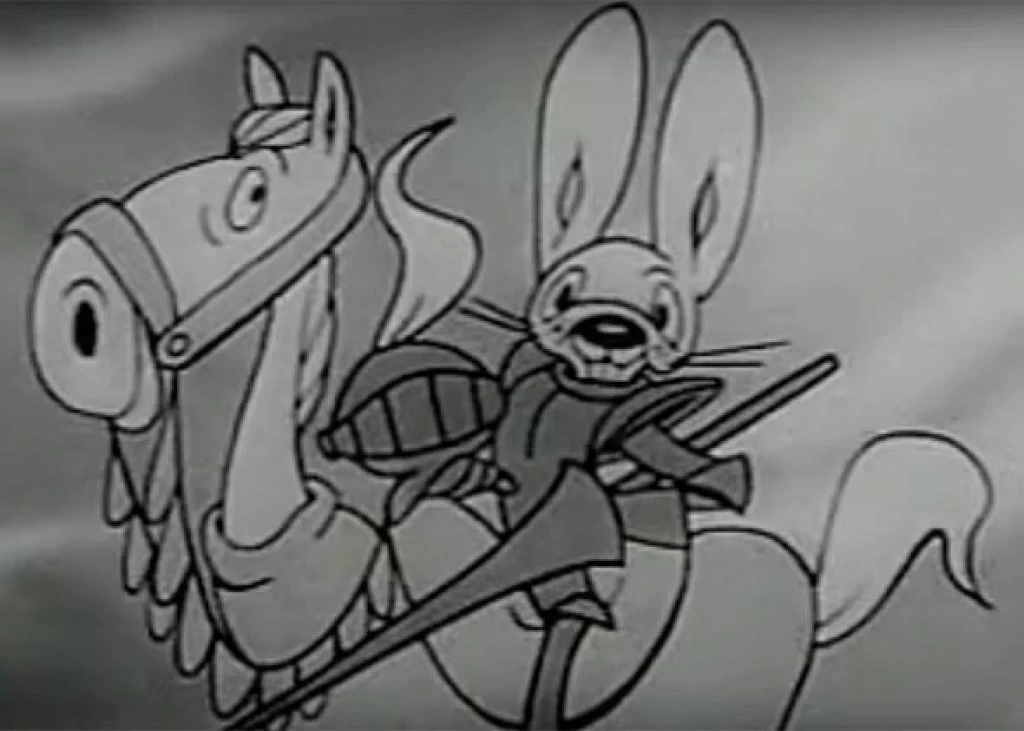
But, again, it was Mighty Mouse that started the Saturday morning cartoon phenomenon. Which we’ll get to. But first…
Children's TV, before Saturday morning cartoons
As noted, Mighty Mouse Playhouse was the first Saturday morning cartoon series, but before the series debuted in 1955, TV programming for children on Saturday mornings did exist.
For instance, Smilin’ Ed McConnell and his Buster Brown Gang started airing on NBC in 1950. The following year, it moved to CBS. Two years later, after CBS cancelled, ABC picked it up for two more years, during which time, its star, Ed MConnell, was in poor health and died in 1954. Actor Andy Devine took over the series – and then in 1955, the show was rechristened Andy’s Gang and started airing on NBC.
On both shows, there were puppets and songs and a live studio audience full of children. McConnell would say, “Hi, kids,” and the kids would sing in unison, “I got shoes, you got shoes, everybody's got to have shoes, but there's only one kind of shoe for me—good old Buster Brown shoes!”
Yes, Buster Brown was creating a cult.
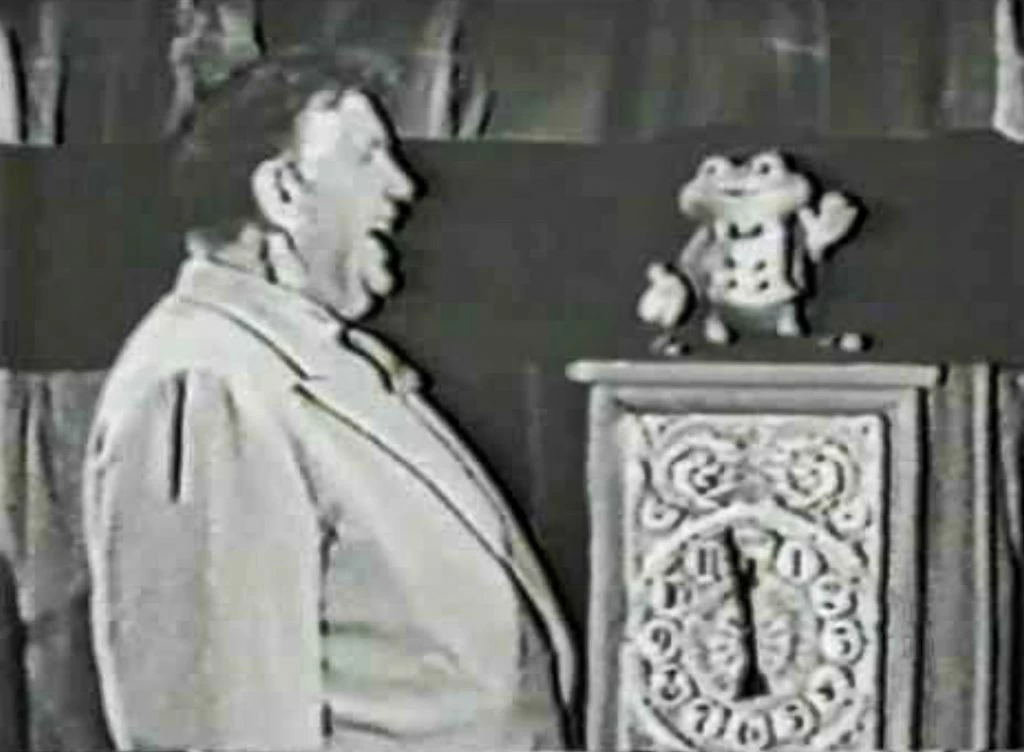
There were other TV shows for kids, like Winky Dink and You, which began airing in 1953, and it should be noted, featured a cartoon character. But the series was hosted by a live human being and future game show host, Jack Barry, and so it wasn't a full-fledged Saturday morning cartoon.
Episodes of The Little Rascals aired on some stations.
The famed children’s series Howdy Doody began airing in 1947, but it was often shown during the week and not on Saturday mornings before 1955 (from 1956 to 1960, it did air on Saturday mornings from 10 to 10:30 a.m., Eastern).
As a kid, in the early 1950s, on Saturday morning or afternoon, you might be watching The Lone Ranger or an Our Gang comedy or the science show, Mr. Wizard.
So there were definitely TV shows aimed at children on Saturday mornings, but if you wanted to watch cartoons, your best bet was to go to the local movie theater – until Mighty Mouse Playhouse came along.
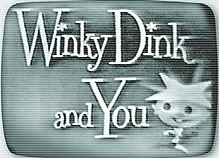
Mighty Mouse Playhouse Arrives on the Scene
Mighty Mouse cartoons first started playing in the movie theaters in 1942. At first, his name was Super Mouse, created by the studio Terrytoons.
An animator named Izzy Klein is generally the one credited for creating the character of Mighty Mouse. Well, sort of. Klein envisioned a housefly as a super hero called Superfly, which, of course, became the name of a movie classic in 1972, but that’s another story.
Paul Terry, the studio head of Terrytoons, looked over Klein's idea and thought, “Uh, no.” But he liked the concept of a super animal, and he decided that they would do a cartoon series about a super mouse. In fact, they named the character, Super Mouse, intending for it to be a parody of Superman.
The cartoon took off, and Terry wound up changing the cartoon to Mighty Mouse in 1944 after learning of another Super Mouse in comic books.
Mighty Mouse was a huge hit, with the character appearing in comic books and dozens of cartoon shorts being cranked out throughout the 1940s, and the success allowed Terrytoons to come up with more animated shorts to show in theaters. Like, for instance, Heckle and Jeckle, a popular cartoon series featuring magpies. Terrytoons also continued to produce less popular cartoons, like their Gandy Goose series (which was something of a hit) and Dinky Duck (which was not).
The cartoon shorts were made as cheaply as possible, though. As Terry once said, “Disney is the Tiffany of animation. I’m the Woolworth.”
Terry was wisely always looking for a way to make a buck, and he recognized that TV just might have a place for his animation. In 1953, his studio created what’s generally considered as the first network TV weekday cartoon series – Barker Bill’s Cartoon Show.
And Mighty Mouse cartoons appeared on Barker Bill’s Cartoon Show, and so when CBS decided to create a Saturday morning cartoon called Mighty Mouse Playhouse, they were pretty sure they were getting a hit.
And it was.
In fact, CBS liked the response to Mighty Mouse Playhouse so much that it ended up buying the film cartoon studio that made Mighty Mouse cartoons for about $5 million. Terrytoon’s film library numbered about 1,100 cartoon shorts at this point. Terry, meanwhile, retired, which apparently didn't go over well with a lot of the animators who had been working for him.
CBS, meanwhile, went to work making money out of its investment. During the summer of 1956, it aired a TV series, CBS Cartoon Theatre -- it only lasted 13 episodes -- that ran during the evenings and was hosted by rising star, Dick Van Dyke.
In the fall of the same year, The Heckle and Jeckle Cartoon Show began airing Saturday mornings on CBS.
Other networks slowly took notice. In 1957 until 1960, on Saturday mornings, NBC started airing The Ruff and Reddy Show about a dog named Reddy and a cat named Ruff.
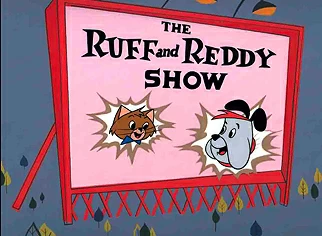
Still, while TV networks were getting into animation, Saturday mornings were somewhat ignored at first, with networks choosing to air children’s fare in the afternoon, after the kids got home from school. Let them do homework some other time.
It made sense. ABC was doing very well on weekdays with its big hit, The Mickey Mouse Club. Howdy Doody was also a smashing success in the afternoons. So when ABC produced The Woody Woodpecker Show in 1957, they ran it on weekday afternoons. The Huckleberry Hound Show, starting in 1958, was syndicated to TV stations across the country, and it might run at any time, like a Saturday morning or a Tuesday evening. In 1959, when The Adventures of Rocky and Bullwinkle and Friends began airing, it was at 5:30 p.m., on Tuesdays and Thursdays, following American Bandstand.
It wasn’t until the mid-1960s when advertisers started to realize that children really, really enjoyed waking up on Saturday mornings and watching cartoons, and, well, there was an explosion of cartoons to come throughout the 1960s, 1970s and 1980s, like Scooby-Doo, Looney Tunes, Super Friends, Speed Buggy, The Smurfs, Captain Caveman and much, much more.
The TV Professor plans to eventually dig deeper into the history of Saturday morning cartoons' heyday.
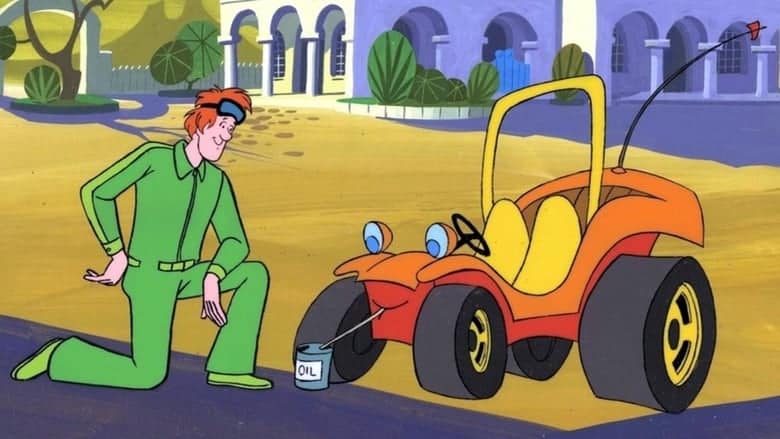
Mighty Mouse Playhouse Sticks Around
As for Mighty Mouse Playhouse, it kept airing year after year. It was wildly popular, but Mighty Mouse generally was only doing his superhero work on television. Only three new Mighty Mouse cartoons aired in theaters (from 1959 to 1961) once Terrytoons was sold to CBS.
Every episode opened with the theme song, which went like this:
Mr. Trouble never hangs around, when he hears this mighty sound.
Mighty Mouse: Here I come to save the day!
That means that Mighty Mouse is on the way! Yes, sir, when there is a wrong to right, Mighty Mouse will join the fight!
Mighty Mouse: Hi, boys and girls! Here we go, rocketing into a fun-filled, exciting cartoon show. Hold onto your seats as we blast off to visit all of your favorite cartoon stars.
The cartoon series was, at first, broadcast in black and white -- even though the theatrical cartoon shorts were originally seen in color.
There were 77 Mighty Mouse cartoons in existence when CBS bought Terrytoons, and then those three theatrical shorts made it a nice round 80. That eventually mean they could stuff 80 Mighty Mouse cartoons into 26 episodes.
CBS was begin running Mighty Mouse Playhouse in 1955 and continue it until 1966, basically showing those 26 episodes over and over. It was a strategy that made some sense, though. Kids would age out of Mighty Mouse Playhouse, and kids would age into it.
In 1965, all of the networks began airing cartoons in color, and so Mighty Mouse Playhouse finally became seen in color. The series finally ended in 1966 when ratings were lower, probably because children were tiring of the repeats and had plenty of cartoon alternatives to watch.
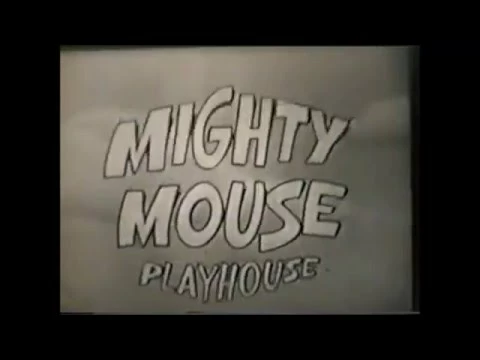
But even with the dearth of cartoons on Saturday mornings during the 1950s, compared with what was to come, the expression, “Saturday morning cartoons” was already starting to come into the lexicon by the end of the decade.
On May 28, 1959, a columnist in The Cazeonovia Republican, a newspaper in Cazenovia, New York, made a reference to the programs, along with an observation that could easily be made by any mom or dad today: “Rain kept most of us inside again this weekend. Thank goodness for Saturday morning cartoons on TV to keep ‘smallfry’ entertained. What did our mothers do without television?”
Where to watch Saturday morning cartoons (at the time of this writing): There are way too many ways to mention, but I'll mention a few standouts. If you’re a fan of MeTV, you likely know all about its “Saturday morning cartoons” block of time, in which they run Popeye and Pals at 7 a.m., The Tom & Jerry Show at 8 a.m., and Bugs Bunny & Friends at 9 a.m. The cable channel also has an hour-long weekday morning live-action show, interspersed with cartoons, called Toon In With Me, hosted by Bill Leff and his puppet friend, Toony the Tuna. Meanwhile, I was excited recently to find Super Friends (1973-1985), a Saturday morning staple, on HBOMax.com. And Captain Caveman and the Teen Angels (1977-1980) can be found on TubiTV.com.
Articles similar to this one: If you enjoyed this look at the early days of Saturday morning cartoons, you probably will enjoy this article about the origins of Tom & Jerry.

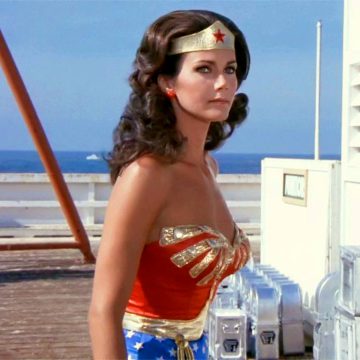
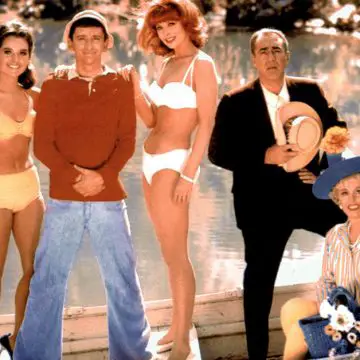
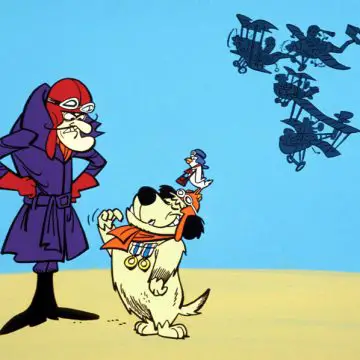
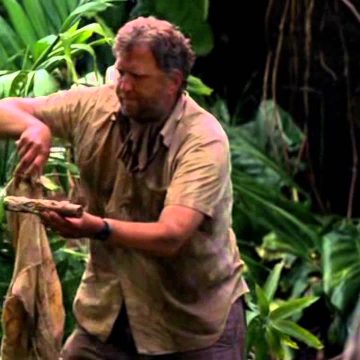
Leave a Reply